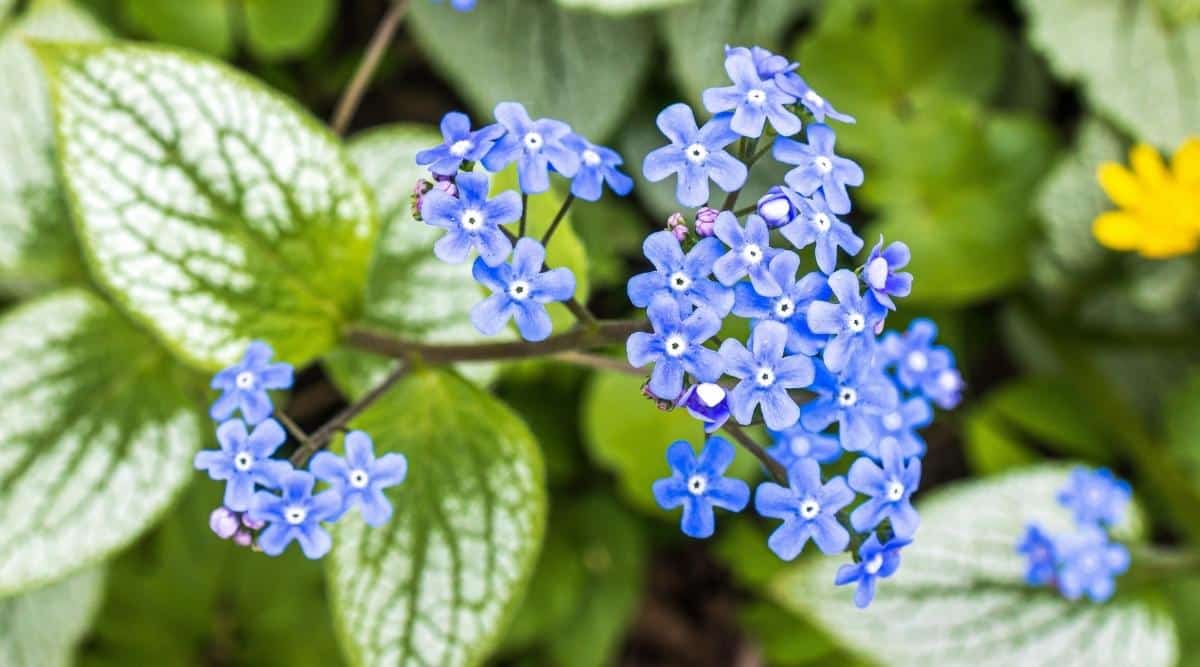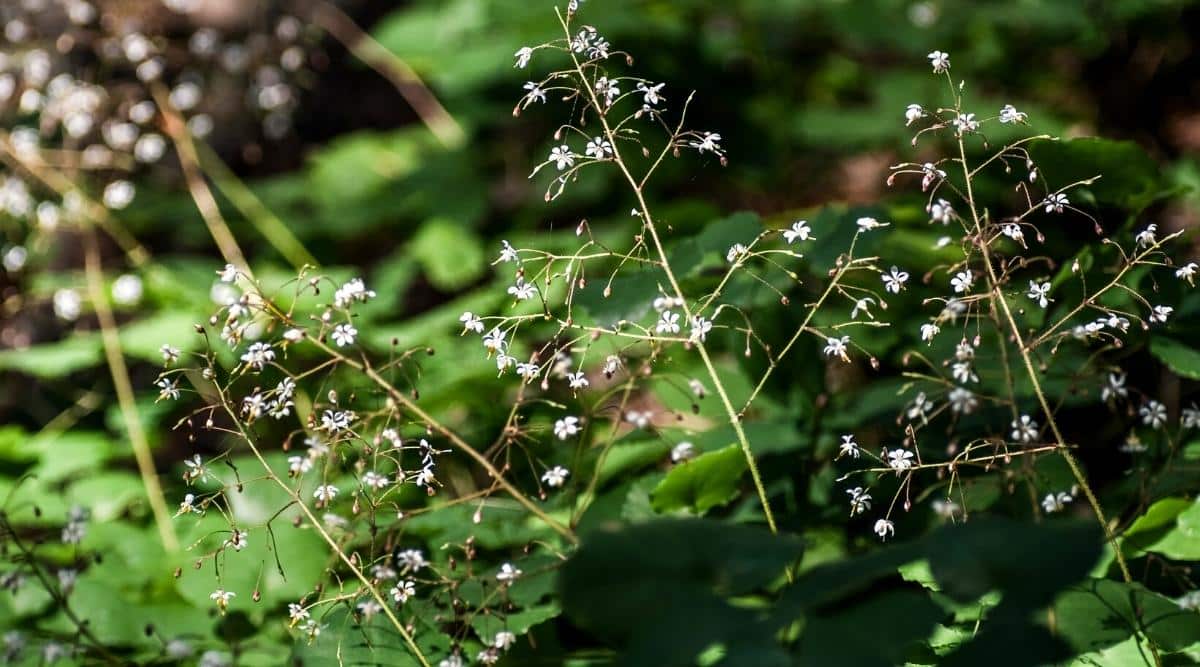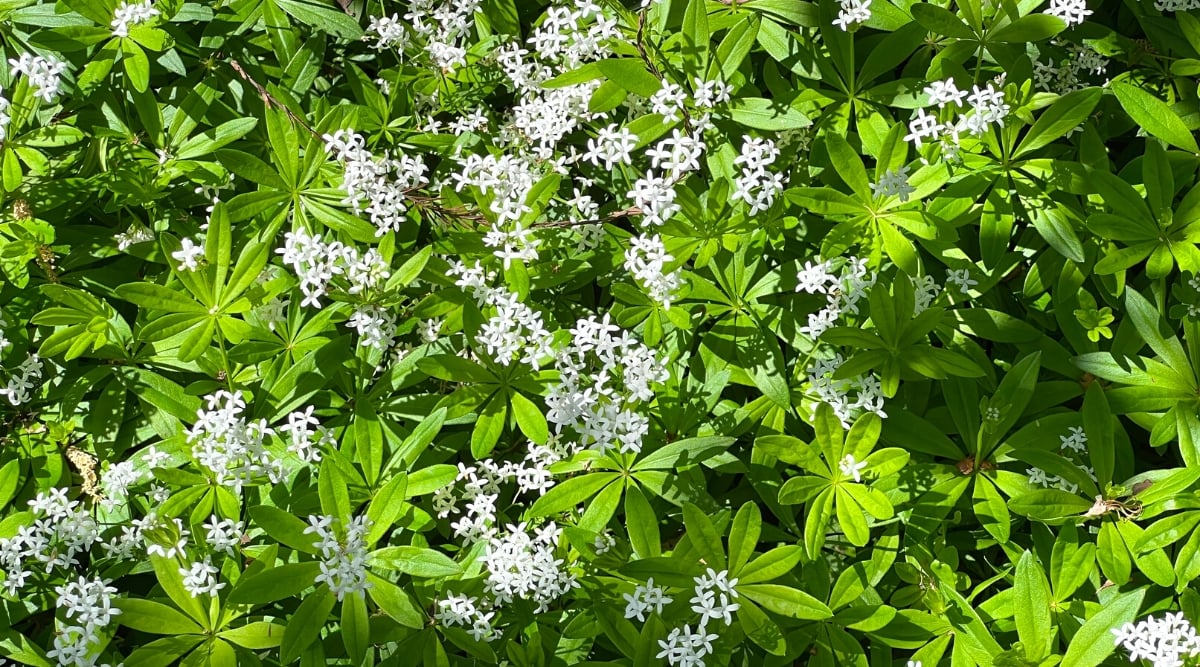[ad_1]
This season, many gardeners have started making the swap from typical grass to perennial flooring cowl vegetation. Once you’re pondering of making the change nevertheless don’t know the place to begin out, you’ve come to the suitable place!
Some great benefits of together with a perennial flooring cowl to your panorama are fairly a number of! These form of flooring cowl require a lot much less repairs than grass, which suggests a lot much less time mowing and additional water saved each season. Even whenever you plan on holding a regular backyard, together with these vegetation might assist cowl areas unsuitable for grass or mowing. They’re moreover unbelievable for pollinators!
Among the many greatest points about deciding on perennial flooring cowl vegetation is that you have many decisions applicable for lots of tastes and capabilities. We’ve gathered a number of of our favorite vegetation from choices native to North America to yard favorites from world large. Let’s check out these good decisions for perennial flooring cowl vegetation!
Bugleweed


Scientific Title: Ajuga reptans
- Plant Sort: Perennial
- Geographic Origin: Eurasia, Africa, Australia
- Plant Dimension: 6-9”
- Photo voltaic Publicity: Full Photo voltaic, Partial Photo voltaic
- Plant Zone: 3-9
Bugleweed exists as many species world large, and there are numerous choices to consider. All varieties have evergreen leaves, creating a reasonably perennial flowering flooring cowl that stays beautiful all yr. Leaves fluctuate from bronzey blue to purple-black to gentle gray-green. Flowers differ from blue to purple.
A member of the mint family, Bugleweed is a non-native species to North America, so whenever you use this in your yard, be certain it stays the place you meant. The plant has been categorised as invasive in some areas, so take care when rising it. Bugleweed is an excellent alternative for areas the place the ground-covering plant can acquire full photo voltaic.
Widespread Blue Violet


Scientific Title: Viola sororia
- Plant Sort: Perennial
- Geographic Origin: Japanese North America
- Plant Dimension: 4-6”
- Photo voltaic Publicity: Partial Photo voltaic, Partial Shade
- Plant Zone: 4-9
The Widespread Blue Violet, a North American native plant, provides a leafy sprawl of flooring defending dotted with purplish flowers. Violet nectar attracts bees and butterflies that act as pollinators for the flower. These vegetation are non-toxic, making them a meals provide for lots of creatures, along with individuals!
Violets are self-seeding, spreading rapidly all through the underside. It is attainable you will want to look at these vegetation fastidiously whenever you’re merely making an attempt to fill in a spot in your backyard. This plant prefers barely shaded areas nevertheless thrives in full photo voltaic if you’re going to get ample water. As a result of this progress, some take note of it a weed, nevertheless to us, it is a good option to fill in home inside the yard.
Japanese Hay-Scented Fern


Scientific Title: Dennstaedtia punctilobula
- Plant Sort: Perennial
- Geographic Origin: Japanese North America
- Plant Dimension: 18-24”
- Photo voltaic Publicity: Partial Photo voltaic, Partial Shade
- Plant Zone: 3-8
Japanese Hay-Scented Ferns develop throughout the US and Canada, having fun with a essential half inside the undergrowth in forests of these areas. These ferns flourish beneath many conditions, along with full photo voltaic, in the event that they’re supplied ample moisture. An adaptable species, Japanese Hay-Scented Fern, tolerates most types of soil and may develop effectively in hilly terrain.
The ferns make for an fascinating flooring cowl with pinnae-toothed fronds with irregular patterns. Japanese Hay-Scented Ferns are vibrant inexperienced and produce no flowers, releasing spores close to the autumn season instead. Though they’re low-maintenance, thinning your ferns as quickly as every few years helps preserve this fast spreader beneath administration.
Heartleaf Bergenia


Scientific Title: Bergenia crassifolia
- Plant Sort: Perennial
- Geographic Origin: Northwestern Asia
- Plant Dimension: 12-18”
- Photo voltaic Publicity: Partial Photo voltaic, Partial Shade
- Plant Zone: 3-8
Most likely essentially the most acquainted member of the genus Bergenia, Heartleaf Bergenia grows tall and huge with distinctive broad leaves and fascia stems that produce clusters of pink flowers. In areas the place this plant is native, it has been ceaselessly used as a tea substitute. Optimistic medicinal properties have moreover been colloquially reported.
Though Heartleaf Bergenia is a non-native plant, it isn’t considerably thought-about invasive. If you need ornamental vegetation to your flooring defending, this plant provides an outstanding determine for delicate environments. If the Heartleaf Bergenia isn’t applicable to your native climate, though it is pretty hardy, take note of totally different species within the equivalent genus.
Heartleaf Brunnera


Scientific Title: Brunnera macrophylla
- Plant Sort: Perennial
- Geographic Origin: Central Eurasia
- Plant Dimension: 14-16”
- Photo voltaic Publicity: Full Shade, Partial Shade
- Plant Zone: 3-8
A subset of a much bigger family, Heartleaf Brunnera serves as an surroundings pleasant low rising plant in shady areas. These vegetation are typically mistaken for Overlook-Me-Not since they’re so comparable in look, considerably the tiny blue flowers in every vegetation.
Nonetheless, the flowers might assist you inform them apart—Heartleaf Brunnera’s flowers develop on leafless stems and are sometimes elevated than Overlook-Me-Not flowers.
The low-maintenance Heartleaf Brunnera has quite a lot of varieties, some with variegated foliage. Vegetation with this leaf choice are often additional delicate to sunlight. Once you’re working with additional photo voltaic, associate with a dark-leafed species. Each method, it’s best to determine a primarily shady spot for Heartleaf Brunnera.
Inside-Out Flower


Scientific Title: Vancouveria hexandra
- Plant Sort: Perennial
- Geographic Origin: Northwestern North America
- Plant Dimension: 12-18”
- Photo voltaic Publicity: Parietal Shade to Full Shade
- Plant Zone: 5-8
A neighborhood plant to the Pacific Northwest, the Inside-Out Flower has been named for the distinctive attraction of its flowers. These small white flowers develop reverse most flowers and develop in clusters of spherical six. In mild ample areas, the Inside-Out Flower will probably be evergreen and may ultimate all yr.
These vegetation are gradual spreaders, so that they’re wonderful for filling in gaps inside the yard with out getting out of hand. They’re exceptionally successfully acclimated to sit back, moist areas.
You in all probability have a spot too shady for a lot of points to develop, take note of the Inside-Out Flower as a solution. To unfold these vegetation fast, divide them inside the spring or fall to encourage new progress.
Lamb’s Ear


Scientific Title: Stachys byzantina
- Plant Sort: Perennial
- Geographic Origin: Central Eurasia
- Plant Dimension: 6-12”
- Photo voltaic Publicity: Full Photo voltaic
- Plant Zone: 4-8
Do you will have a unadorned patch of flooring with full photo voltaic conditions that you just uncover troublesome to cultivate? Try Lamb’s Ear—a perennial flooring cowl decision that is evergreen as long as winter conditions aren’t too harsh. These vegetation might die once more all through colder months, nevertheless new progress appears all through the spring.
Lamb’s Ear is a popular choice and a favorite option to be planted in youngsters’s gardens. The establish of this plant refers again to the fragile texture of its silvery inexperienced leaves. Lamb’s Ear produces clustered flowers on the excessive of the stem. These purple flowers encourage pollinators and hummingbirds to stop in your yard.
Lily of the Valley


Scientific Title: Convallaria majalis
- Plant Sort: Perennial
- Geographic Origin: Eurasia
- Plant Dimension: 6-12”
- Photo voltaic Publicity: Partial Shade
- Plant Zone: 3-9
A yard favorite, Lily of the Valley, grew all through the Eurasian continent and was dropped at North America. Broad leaves with pointed recommendations and small white bell-shaped flowers characterize this plant. These perennials will tolerate shady conditions the place totally different vegetation will not develop.
Some native species occur within the US, nevertheless debate exists about whether or not or not these varieties originated on the continent. The plant has moreover turn into invasive in certain areas.
Whatever the variability, there are important elements to consider sooner than together with these beautiful vegetation as a perennial flooring in your property. You in all probability have curious kids or pets, keep in mind these vegetation are toxic. There’s a revenue to this: free pest administration!
Pacific Bleeding Coronary coronary heart


Scientific Title: Dicentra formosa
- Plant Sort: Perennial
- Geographic Origin: Pacific Coast of North America
- Plant Dimension: 10-20”
- Photo voltaic Publicity: Partial Shade, Full Shade
- Plant Zone: 3-9
There are tons to love regarding the Pacific Bleeding Coronary coronary heart, with lush leaves reminiscent of ferns and small, delicate perennial flowers in shades of pink, purple, and white. These vegetation can take root in rockier soils and grows biggest with quite a lot of shade nevertheless can tolerate additional photo voltaic if the temperature is cool and ample moisture is given.
Pacific Bleeding Hearts entice wildlife like hummingbirds and butterflies when the flowers bloom all through the spring. Even after the flowers are gone, the plant will preserve up to date and inexperienced if it receives the appropriate shade. This native alternative is excellent for folk residing inside the western United States.
Snow in Summer season


Scientific Title: Cerastium tomentosum
- Plant Sort: Perennial
- Geographic Origin: Alpine Europe
- Plant Dimension: 6-12”
- Photo voltaic Publicity: Full Photo voltaic, Partial Photo voltaic
- Plant Zone: 3-7
Snow in Summer season is an environment friendly alternative for rocky or sandy gardens that get full or partial photo voltaic in warmth climates. Whereas it might tolerate some heat, persistently scorching local weather paired with humidity can hurt these vegetation.
The establish derives from the delicate white perennial flowers that bloom from the plant from May to July.
The foliage of Snow in Summer season is a light-weight inexperienced, just about silvery. Of us choose this partaking plant as a result of its distinct shade and expertise to develop in most soil varieties. It is a in type alternative globally, providing a thick defending the place it is cultivated. Snow in Summer season will also be comparatively low repairs as long as the soil is successfully drained.
Sweet Woodruff


Scientific Title: Galium odoratum
- Plant Sort: Perennial
- Geographic Origin: Eurasia
- Plant Dimension: 6-8”
- Photo voltaic Publicity: Full Shade, Partial Shade
- Plant Zone: 4-8
Sweet Woodruff is fragrant, a shade-loving plant with notes of fresh-cut grass. The plant’s alternative is for rich soil with quite a lot of supplied moisture. Straightforward leaves and glossy white flowers characterize this beautiful plant. The star-shaped flowers develop in clusters and bloom in spring.
These vegetation have prolonged been a favorite of shady gardens for his or her ease of care together with their pleasing aesthetic. Sweet Woodruff has prolonged been used as an edible herb. The dried leaves and flowers is also used for potpourri, whereas the stems and roots could be utilized to offer dye.
Virginia Creeper


Scientific Title: Parthenocissus quinquefolia
- Plant Sort: Perennial
- Geographic Origin: Japanese and Central North America
- Plant Dimension: 3-40’
- Photo voltaic Publicity: Full Photo voltaic, Partial Photo voltaic
- Plant Zone: 3-9
A North American native, Virginia Creeper has moreover been acknowledged by many alternative names like Victoria Creeper and Hearth-leaved Ivy. This species is a flowering vine that will climb extreme if given a chance. In another case, it spreads outwards. The enlargement of the Virginia Creeper is speedy and serves as a quick flooring cowl for home.
This plant grows successfully in just about any soil and may tolerate most conditions, even drought. Virginia Creeper can merely be mistaken for Poison Ivy due to the comparable type of their leaves.
Nonetheless, Virginia Creeper leaves typically have 5 leaflets instead of three. The plant moreover flowers and produces berries, which can be toxic to individuals nevertheless an outstanding meals provide for wildlife like birds.
White Picket Aster


Scientific Title: Eurybia divaricata
- Plant Sort: Perennial
- Geographic Origin: Japanese North America
- Plant Dimension: 12”-36”
- Photo voltaic Publicity: Partial Photo voltaic, Partial Shade
- Plant Zone: 4-9
Are you in the hunt for a late bloomer to brighten up your backyard all through the late summer season? White Picket Aster flowers from August to September current a pop of shade merely when many vegetation die out for the season. The native plant prefers drier areas and woodlands and grows fairly tall.
White Picket Aster is most at home in mountainous and wooded areas. A benefit of using this plant as flooring defending is whatever the heights they’re going to develop to. They don’t require additional help from stakes. Nonetheless, the plant is additional weak to bugs and sickness than totally different decisions.
Wild Ginger


Scientific Title: Asarum
- Plant Sort: Perennial
- Geographic Origin: Northern Hemisphere
- Plant Dimension: 3-6”
- Photo voltaic Publicity: Full Shade, Partial Shade
- Plant Zone: 2-8
Wild Ginger varieties thrive wherever there’s shade and moist nevertheless well-draining soil. These vegetation unfold out, making a inexperienced carpet for bare home in areas it’s used as a flooring cowl. Though not always seen, small flowers bloom beneath the foliage, usually darkish purple to maroon in shade.
The scent produced by Wild Ginger smells like the inspiration that shares its establish. It might’t be eaten within the equivalent method. These vegetation embody aristolochic acid, a carcinogen the FDA warns in opposition to consuming.
With appropriate consideration, Wild Ginger stays a reasonably alternative that comes once more yearly. This perennial is one other alternative with native varieties wonderful for the place you reside! There are moreover some varieties that are native wildflowers to North America.
Wild Strawberries


Scientific Title: Fragaria vesca
- Plant Sort: Perennial
- Geographic Origin: Northern Hemisphere
- Plant Dimension: 1-6”
- Photo voltaic Publicity: Full Photo voltaic, Partial Photo voltaic
- Plant Zone: 3-10
Varieties of untamed strawberries develop throughout the Northern Hemisphere. They develop low, close to the earth, and bloom early, usually producing berries spherical June. Not solely does this perennial flooring cowl have edible produce, nevertheless the trifoliate leaves and white flowers make this an eye-pleasing option to cowl bare spots.
Wild strawberries have a historic previous shared with of us relationship once more to historic events. Farmed strawberries within the current day are the outcomes of crossing wild species.
Folks cultivated totally different varieties sooner than this, so huge varieties could be discovered, from ornamental decisions to good fruit producers. Evaluation which species shall be worthwhile in your space; with wild strawberries, you will have a plethora of decisions.
Woodland Stonecrop


Scientific Title: Sedum ternatum
- Plant Sort: Perennial
- Geographic Origin: Japanese North America
- Plant Dimension: 7-12”
- Photo voltaic Publicity: Partial Photo voltaic, Partial Shade
- Plant Zone: 4-8
One of many very important adaptable stonecrop varieties, Woodland Stonecrop, can tolerate shade and prefers some photo voltaic. It’s a good native wildflower choice though there are totally different species to pick out from inside the stonecrop family. What’s wonderful about Woodland Stonecrop is its talent to develop up via rocky and shallow soils.
In distinction to totally different members of the stonecrop family, this plant has small star-like white flowers with 4 petals. Totally different species, native and cultivated, have 5 petals.
Woodland Stonecrop has beautiful leaves, identical to these of a succulent. The leaves are present in a particular whorled pattern. Complete, this can be a fantastic choice for for rocky or shaded areas.
Picket Sorrel


Scientific Title: Oxalis
- Plant Sort: Perennial
- Geographic Origin: Worldwide
- Plant Dimension: 5-15”
- Photo voltaic Publicity: Partial Photo voltaic
- Plant Zone: 3-10
Species of picket sorrel flourish throughout the globe. Normally referred to as sourgrass on account of their tart type, these are edible vegetation from petal to root. Picket sorrel will also be a visually partaking choice, with leaves in models of three and flowers in white, pink, crimson, and yellow.
The huge unfold of this plant all through the globe means regional varieties exist in most places. Not all species are perennial, nevertheless many are, and there are higher than 5 hundred species to pick out from. Together with native varieties, picket sorrel has moreover been grown in ornamental varieties, along with some four-leaf species that look reminiscent of lucky four-leaf clovers.
Final Concepts
Whatever the conditions near you, there are a lot of native and ornamental decisions for perennial flooring cowl to your space.
Should you want to make an affect, plant native species to encourage pollinators and pure ecosystems to flourish. Positive flooring coverings help restore soil, forestall erosion, and even gradual the unfold of fireplace. Not solely are these vegetation useful, nevertheless many are moreover aesthetically pleasing, creating pops of shade in your yard.
From full shade to full photo voltaic, we hope you’ve beloved the fairly a number of suggestions we’ve given! There are far more decisions, nevertheless these had been simply a few of our favorites.
[ad_2]
Provide hyperlink
